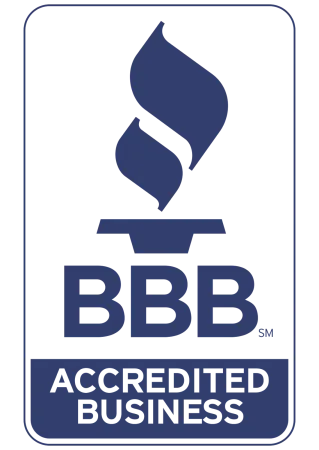Navigating retirement savings can feel overwhelming, especially when tax implications are involved. If you're searching for Roth IRA rules, Roth IRA IRS rules, or Roth IRA tax rules, you're not alone - millions of Americans are turning to Roth IRAs for their powerful tax advantages. As of October 2025, these accounts offer tax-free growth and withdrawals, making them a cornerstone of long-term financial planning. This comprehensive guide from Healthcare Employees Federal Credit Union (HEFCU) breaks down the essentials, including the latest 2025 updates, so you can make informed decisions for your future.
Whether you're a young professional maxing out contributions or nearing retirement and eyeing tax diversification, understanding these rules is key to building wealth efficiently. Let's get started.
Roth IRA Trends in 2025: Why They're More Popular Than Ever
Roth IRAs continue to surge in popularity amid economic uncertainty and whispers of future tax increases. In recent data, Roth accounts captured 62% of all IRA contributions, reflecting a shift toward tax-free retirement income. The average annual IRA contribution hovers around $3,200, but savvy savers are pushing toward the full limits to combat inflation and longevity risks. Key trends shaping 2025 include:
Backdoor Roth Strategies Remain Viable: High earners are using the "backdoor" method - contributing to a traditional IRA and converting to Roth - to bypass income limits, a tactic that's "alive and well" this year.
Focus on Heir Benefits and Longevity Insurance: With Americans living longer, Roth IRAs are prized for penalty-free withdrawals after age 59½ and tax-free inheritances for beneficiaries, who can stretch distributions over 10 years.
Historical Returns Highlight Growth Potential: Over the past decade, a typical Roth IRA invested in the S&P 500 has delivered average annualized returns of about 11.3% (or 8% inflation-adjusted), underscoring their role in compounding wealth.
No Major Limit Hikes, But Inflation Adjustments Apply: While the base contribution limit holds steady, phase-out ranges have expanded slightly, allowing more middle-income filers to qualify fully.
These trends emphasize Roth IRAs as a flexible, future proof option - especially with potential policy shifts on the horizon.
What Is a Roth IRA?
A Roth IRA is an individual retirement account where you contribute after-tax dollars, but qualified withdrawals (including earnings) are entirely tax free. Unlike traditional IRAs, there's no upfront tax deduction, but the payoff comes in retirement: no required minimum distributions (RMDs) during your lifetime, giving your money more time to grow.
Created under the Taxpayer Relief Act of 1997, Roth IRAs are ideal for those expecting higher tax brackets in retirement or wanting to minimize estate taxes.
Roth IRA IRS Rules: Eligibility and Contribution Guidelines
The IRS sets clear Roth IRA IRS rules to ensure fair access. Here's what you need to know for 2025:
Contribution Limits
Under Age 50: Up to $7,000 total across all your IRAs (traditional and Roth combined).
Age 50 and Older: $8,000, including a $1,000 catch up contribution. These limits apply to your taxable compensation for the year, if you earn less, that's your cap. You can contribute until April 15, 2026, for 2025.
Income Eligibility
Your modified adjusted gross income (MAGI) determines if you can contribute fully:
Single or Head of Household: Full contribution if MAGI < $150,000; phase out between $150,000-$165,000; ineligible above $165,000.
Married Filing Jointly: Full if MAGI < $236,000; phase-out $236,000-$246,000; ineligible above $246,000.
Married Filing Separately: Phase-out $0-$10,000 (if living with spouse); otherwise ineligible.
Spousal IRAs allow non-working partners to contribute based on the working spouse's income.
Roth IRA Tax Rules: The Benefits and Fine Print
Roth IRA tax rules are where the magic happens - pay taxes now, retire tax-free later. Key points:
Contributions: Made with after-tax dollars - no deduction on your current return.
Growth: Earnings compound tax-free.
Qualified Withdrawals: Tax- and penalty-free after age 59½ and a 5-year holding period (from your first contribution).
Non-Qualified Withdrawals: Contributions come out first (always tax- and penalty-free); earnings may face income tax + 10% penalty if under 59½.
No lifetime RMDs mean you control distributions. For estates, heirs get tax-free growth but must withdraw within 10 years.
Withdrawal Rules and Exceptions
Under Roth IRA rules, flexibility is a strength:
Contributions: Withdraw anytime, tax- and penalty-free.
Earnings: Penalty-free for first-time home buying (up to $10,000), qualified education, or unreimbursed medical expenses.
Conversions: If using backdoor, 5-year rule applies per conversion to avoid penalties on earnings.
Always consult a tax pro for your situation - rules can get nuanced.
How to Open a Roth IRA with HEFCU: Simple Steps
Ready to start? HEFCU makes it easy:
Check Eligibility: Use our online calculator to verify your MAGI and limits.
Gather Docs: ID, SSN, and employment info.
Fund It: Contribute via payroll, transfer, or check - choose from low-fee investments like CDs, mutual funds, or stocks.
Automate: Set up recurring contributions to hit limits effortlessly.
As a member-owned credit union, we offer competitive rates and personalized guidance - no sales pressure.
FAQs on Roth IRA Rules
Can I have both Roth and Traditional IRAs? Yes, but total contributions can't exceed limits.
What if I'm over the income limit? Consider backdoor conversions or a Roth 401(k) if available.
Are there 2025 changes? Limits are steady, but phase-outs expanded slightly for broader access.
Secure Your Future with HEFCU Today
Mastering Roth IRA rules, Roth IRA IRS rules, and Roth IRA tax rules is your first step to tax-smart retirement. At Healthcare Employees Federal Credit Union, we're here to help healthcare heroes like you build lasting wealth. Open your Roth IRA online at hefcu.com or visit a branch - let's chat about your goals.
Questions? Contact us or call (609) 951-0700.



